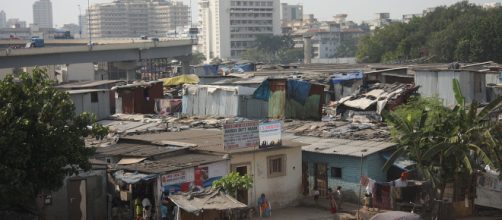Poverty is a societally unacceptable living state in which one is deprived of basic needs for a prolonged period of time. Development economists categorize poverty into two groups: those who live on less than $3.10 per day and those who live on less than $1.90 per day. BRAC, a poverty alleviation development organization, adds another group: the ultra-poor, who live on less than 75 cents per day. The United States Census Bureau distinguishes between poverty, income below the poverty threshold, and deep poverty, income below 50 percent of the poverty threshold.
Why are poverty distinctions important? Isn’t all poverty the same?
Policy makers rely on these distinctions to craft specific and more effective development policies, interventions, and programs. The ultra-poor have fewer resources at 75 cents a day than the extreme poor who live on less than $1.90 per day – both of which lack the resources of the poor who live on less than $3.10 per day. A broad policy prescription is not effective and may widen economic inequality.
Poverty Brackets are important for targeted policy prescriptions and account for varied standards of living. For example, the ultra-poor rarely benefit from market-based interventions, BRAC reported, because they do not have the same access to capital and the market that higher brackets do, thus, they cannot reap the benefits of market-based programs such as microfinance.
Prescriptions vary even within the brackets: the higher quartile of the ultra-poor can benefit from soft loans, whereas the rest of the bracket would not.
Ultra-poverty in Bangladesh
BRAC focuses their programming on the ultra-poor. In Bangladesh, the ultra-poor are predominately landless, rural women, thus, they have programming focused on serving that demographic. The ultra-poor in Bangladesh, according to BRAC, live on less than $1.10 per day and despite spending at least 80 percent of their income on food, consume less than 80 percent of required daily nutrients. Distinguishing between the levels of poverty allows programs to be more effective by focusing on specific demographics which make up certain levels.
With a well-defined demographic, BRAC encouraged entrepreneurship by providing one-time productive assets such as livestock and crops. Heifer International is well known for its livestock asset program, which provides the ultra-poor with a source of revenue and food while developing skills. The ultra-poor can graduate out of poverty if provided with confidence, skills, and assets, BRAC reported. BRAC provided weekly stipends for lost revenue while participants received hands-on training and developed a community support system for participants as they transition into new lifestyles.
Deep poverty in the United States
Community support and integration in society is vital to alleviate relative poverty, a concept defined by economist Angus Deaton as the inability to participate in society.
While absolute poverty is the lack of resources often seen in developing countries, relative poverty is more frequent in developed countries where societal integration is based on the ability to work. In the United States, safety net programs are also dependent on an individual’s ability to work. Nearly 75 percent of adult Americans in deep poverty were unable to work in 2015 due to their lack of health, education, or development, according to the Center for Poverty Research.
United States President Donald Trump and his administration recently proposed a 30 percent budget reduction of the Supplemental Nutrition Assistance Program (SNAP), a safety net program which provides food vouchers to Americans in poverty.
Of the 44 million Americans under SNAP, two-thirds (almost 30 million people) are children, the elderly, or have a disability, NPR reported. The decision is an example of a broad policy change that does not account for varying levels of poverty.
To address poverty in the United States, the government must take a bracket approach, like BRAC did in Bangladesh, and focus on those living in deep poverty. Deep poverty affected 18.5 million people in the United States in 2016, according to the Center for Poverty Research. Americans in deep poverty are predominately those with disabilities and those who lost their jobs due to automation, Philip Alston said in a controversial United Nations report on poverty in America.
A tailored policy approach to raise the skills of Americans with disabilities in deep poverty is more beneficial than broad poverty alleviation strategies which do not differentiate between poverty brackets or specific populations.
Assistance programs like SNAP and BRAC cannot succeed in poverty alleviation without support from the government. BRAC recommends that those in extreme and ultra-poverty should have access to economic growth, employment, infrastructure networks, stable markets, and safety net programs to foster their development and graduation out of extreme and ultra-poverty.


